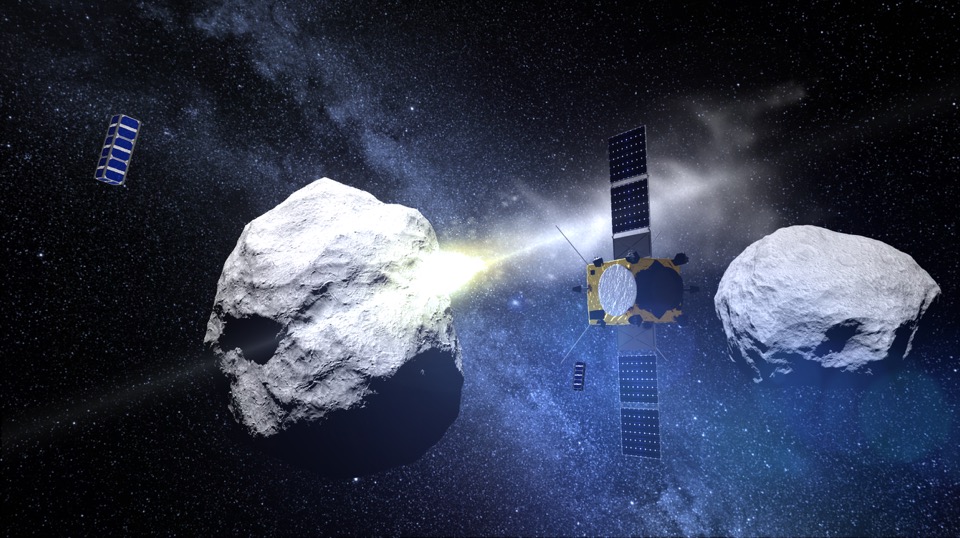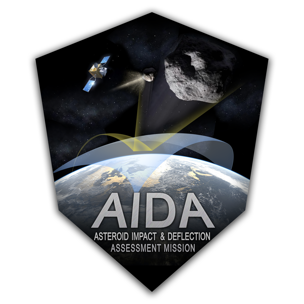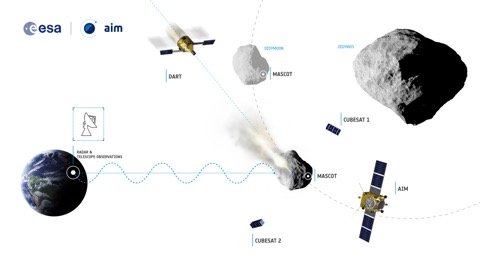The Asteroid Impact & Deflection Assessment (AIDA) mission is a joint project of ESA and NASA. It is a technology demonstration of the kinetic impactor concept to deflect a small asteroid and to characterize its physical properties. It started in 2011 as a joint study between JHU/APL, NASA, the Côte d’Azur Observatory (OCA, Nice, France) and DLR. The mission went into phase A/B1 at ESA in early 2015 for 15 months and will enter into Phase A at NASA in spring 2015 (see News below). You can watch the Video explaining the concept on the ESA website (click here).
 Credit: ESA
Credit: ESA
AIDA is composed of the projectile called DART (Double Asteroid Redirection Test) and an observer satellite called AIM (Asteroid Impact Mission), each under study by NASA and ESA, respectively.The combination of both spacecrafts is referred to as AIDA. As in the separate DART and AIM studies, the target of this mission is the binary asteroid system (65803) Didymos. For a successful joint mission, one spacecraft, DART would impact the secondary of the Didymos binary system in October 2022 while AIM would first characterize the target asteroid (surface and internal properties), observe the impact event and measure any change in the relative orbit.


Another Video made by the APL/JHU laboratory (USA), in which a few involved scientists and engineers explain the motivation, is posted on YouTube (click here)
NEWS:/MEETINGS (upcoming in yellow)
- 2nd AIDA International Workshop in Nice (France), June 1-3, 2016 (click here for more information).
- European Geoscience Union (EGU) General Assembly 2016: PS1.5 Science and Technology for the Asteroid Impact & Deflection Assessment (AIDA) mission (Vienna, Austria), April 17-22, 2016 (click here for information)
- Asteroid Impact Mission (AIM) Science Meeting in ESAC (Madrid, Spain), March 1-2, 2016 (click here for information)
- Public AIDA splinter meeting at the European Planetary Science Conference (EPSC) 2015 on Sept. 29th, at 17:45 (room Mars); click here for info from ESA web site.
- The study of AIM by ESA is now in Phase A/B1 since early March 2015 for 15 months (click here for more info).
- Two industrial studies as well as payload studies are performed (click here for more info).
- A call for cubesat experiments (closed) has also been released (click here for more info).
- The AIM investigation team led by P. Michel (CNRS/Côte d’Azur Observatory, France), composed of scientists with the different required expertises, define the science objectives, requirements, and environment.
- The DART investigation team is led by A. Cheng (APL/JHU). DART is in pre-Phase A and is planed to go into Phase A in early fall 2015.








